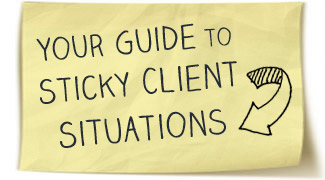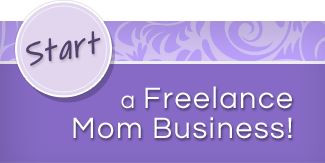
Can you charge a premium price for your product or service right out of the gate?
In a general corporate work culture where people learn to pay their dues before they move up the ladder—regardless of their capabilities—it’s easy to believe that you should charge low prices when starting out until you build up a portfolio or a strong list of past clients.
There are two main schools of thought on this, and I’d like to offer a sort of combination approach that focuses on something that as Freelance Moms we all need: a strong valuation of your self-worth.
I challenge you to consider this approach:
Work for free or work for what you’re worth. Nothing in between.
The Big, Bad Rhetoric Around Working for Free
It seems counter-intuitive. Isn’t it better to work for some money, to be paid for your work, than to work for nothing?
Quite the opposite. When you are just starting out, you may or may not have enough background experience or testimonials to land paying big-name clients, but big-names who need work done on a volunteer or basically volunteer basis can give your credentials a boost much faster than working for low-paying, small-fish clients.
This approach works with:
- nonprofits
- startups
- scholarship cases (for people who offer courses or coaching. You sound both magnanimous and like a rockstar when you offer scholarships)
Like Shenee Howard’s 100 people project, you can use this initial time of serving your audience for free not only to learn more about yourself and your business, but to build a referral network so you have people primed to pay your real prices.
When you are doing something for free, it is volunteering, lending your expertise to those who couldn’t afford it otherwise. This is even a completely different category on your taxes! (And you get tax benefits from these types of “in-kind” donations of your time).
This is very different than working for someone who can’t afford you, but undervalues your work and expertise by offering a low price for it.
The truth is, being paid less than what your work is worth has a variety of negative side effects that can negate the short-term benefit of having money in the bank or validation.
Why Low Prices = Low Quality Work and Lower Income Potential Over Time
There are so many reasons why starting to work at low prices works out poorly in the long run:
- You get on-going, low-paying clients that you are afraid to leave and replace with higher-paying ones that suck up time you should be using for higher-paying work.
- Lower-paying clients often have poor work processes and expectations and can take up more of your time than higher-paying ones.
- You raise your prices incrementally to not “scare away” clients and end up charging lower prices than you deserve for years.
- Higher-paying clients are actually scared away by your low prices because they automatically think you deliver less value than someone who charges the same thing for the same service or product.
Let’s look at the first year of two coaching businesses.
Both coaches have a background as business assistants, so they know the processes required to run a business and the tactics their former bosses used to motivate their workforce and close deals.
Coach 1 has decided to focus on helping virtual assistants get started, because that is closest to what she used to do, and starts with a price point of $50 per hour, because she feels like that is already a stretch for moms in this line of work.
Coach 2 decides not to focus on a single type of business, but on one aspect: processes. She knows this is an incredibly important thing in terms of helping businesses save time and thus money, so she prices herself at $200 an hour, because she feels like even if she gives just three or four useful tactics in a one-hour call, her clients will easily save more than $200 of their own time with those techniques.
Coach 1 starts with four weekly clients and Coach 2 starts with two bi-weekly clients when they launch:
Not only does Coach 1 not approach the same income as Coach 2, but she is working many more hours and making less money. As Freelance Moms in a service business, if we want to spend more time with our families, we must always look for ways to maximize the income we get from each hour we spend working.
Okay, for free or for what you’re worth, but how can you actually get people to pay high prices when you’re starting out?
How to Charge Rockstar Prices as a New Freelance Mom
It may feel even weirder than working for free to jump from earning nothing to earning a very high rate, and we’ll talk more about that in next weeks post on how to “fake it till you make it.”
In the meantime, there are some very clear steps you can take to align your marketing and image with these fair prices:
- focus your marketing on benefits to the customer so they are not looking at your price as an expense, but as an investment with a clear return
- be incredibly specific both in the focus of your business and each product or service you offer so the customer can easily measure the value for him or herself and see what a great deal even a high price is
- match your background to the product so it’s clear you bring value even if you don’t have a big client list
- use the work you’ve done for free to build trust with potential clients and charge higher prices later
Did you charge lower rates when you were first starting out? Do you think it is okay to work for free to build your freelance resume?






